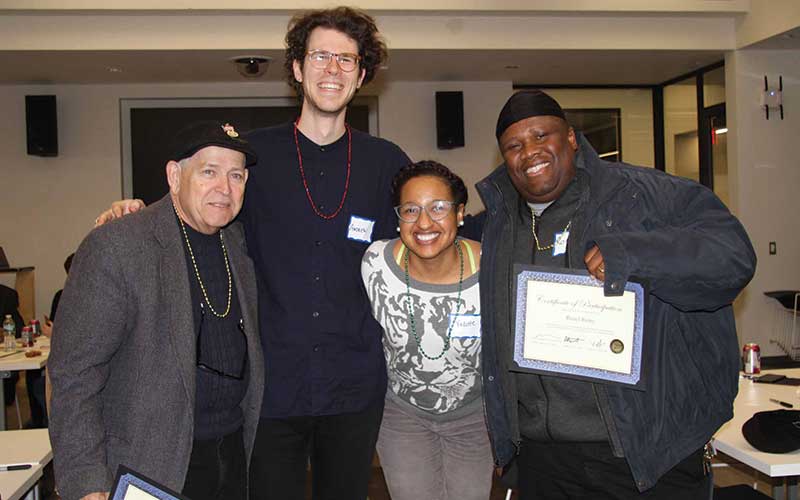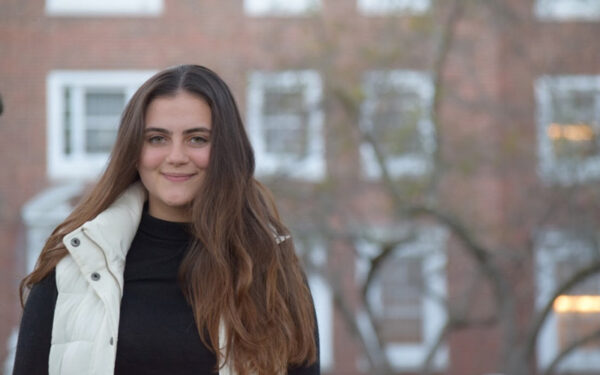
CLF Director of Research Vedette Gavin worked with MIT, community partners, and 40 resident researchers to develop a health research model that puts the community at the heart of the work. [left to right] Ramo Sepulveda from Brockton, Andrew Binet with MIT, Gavin, and Ronel Remy from Brockton.
A New Research Model Puts the Community in the Driver’s Seat
One of the most significant ways to transform health and grow local economies is by improving neighborhoods through a type of development called transit-oriented development: high-density housing that integrates commercial, retail, and green space within easy walking distance of public transportation.
Promoting such development was the impetus behind the 2014 launch of the Healthy Neighborhoods Equity Fund, a partnership between CLF and the Massachusetts Housing Investment Corporation. Over the past three years, the Fund has helped bring $18 million in financing to support six development projects in the Greater Boston area.
But, completing a new development is really just the beginning of the story. The true success of such targeted investment will come with the changes it brings to a community over time. That’s where Vedette Gavin, CLF’s Director of Research, comes in. “The reality is that the relationship between development and health is extremely complex,” she says.
Development can affect income security, housing stability, neighborhood safety, population mobility, and culture – all of which influence health. Understanding how those factors interact is critical to measuring the effectiveness of transit-oriented development on neighborhoods and people. So in 2015, Gavin launched the Healthy Neighborhoods Study, with funding from the Robert Wood Johnson Foundation and in partnership with MIT’s Department of Urban Studies and Planning Community Innovators Lab.
Traditional research on neighborhoods and health relies on academic experts analyzing big data sets over time – lifespans, ages, race, and health outcomes of residents, for example, and changes in average income and education. This data is valuable, but Gavin knows it’s only part of the story. “It’s my fundamental belief that if you’re trying to know if a community is actually healthy, you go straight to the source – the residents,” she says.
With her partners at MIT, Gavin identified nine communities in Eastern Massachusetts with struggling health and economies, and where high levels of new development are most likely – three of which have active projects invested in by the Healthy Neighborhoods Equity Fund. She then partnered with an organization in each community that is leading work around health, development, or environmental justice. Those groups in turn recruited 40 local researchers to conduct 400 on-the-ground interviews with fellow residents about what matters most for health when developing neighborhoods.
Gavin wanted to ensure the resident researchers didn’t just collect data, however, with no opportunity to use it to help their own communities once the research was completed. She facilitated a process through which the residents and partners co-created research questions and measures so that the data collected will be as meaningful and useful to their work in helping to build healthier communities as it is to CLF and MIT.
That process created a dynamic rarely seen in research circles. “The institutional and community researchers were on an equal playing field,” she says. “Having them create and share the work as peers was phenomenal. Research comes and goes, but if you’re learning in a community, it’s a process, and it’s a culture that’s created.”
The Healthy Neighborhoods Study will unfold over the course of several years as the researchers continue to measure development impacts on their communities. But that doesn’t mean the information gathered so far is languishing in a researcher’s database. The partner organizations in each community are already sharing the first year’s data with local politicians, developers, and citizens in an effort to shape ongoing conversations about residents’ needs and priorities.
Together, the Healthy Neighborhoods Equity Fund and this community-based research approach are providing unique and replicable models for a new kind of impact investing that builds healthy places for healthy people. For Gavin, the success of the research project is also inspiring new ideas for engaging communities across CLF’s work. “There’s an amazing opportunity to support conservation at the community level by using these same methods, not for the sake of asking questions, but for working with communities to build solutions to environmental challenges,” she says.




